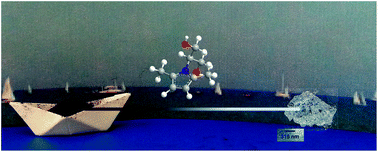Biobased Janus molecule for the facile preparation of water solutions of few layer graphene sheets
Abstract
A biobased Janus molecule was used to prepare water solutions of nano-stacks made by few layer graphene. The Janus molecule was 2-(2,5-dimethyl-1H-pyrrol-1-yl)-1,3-propanediol (serinol pyrrole, SP), a serinol derivative obtained through the neat reaction of 2-amino-1,3-propandiol with 2,5-hexanedione, with atom efficiency of about 85%. SP contains the pyrrole ring, suitable for the interaction with carbon allotropes and hydroxy groups, that can easily interact with polar surroundings. Adducts, with about 14% by mass of SP, were prepared by reacting SP with a high surface area nano-sized graphite (HSAG), with about 35 graphene layers stacked in crystalline domains. Green methods were adopted, such as ball milling (HSAG–SP-M) and heating. Infrared spectra revealed peaks due to both HSAG and SP and additional peaks that could be attributed to the adduct. Both thermal and mechanical reactions left substantially unaltered the order in the graphitic layers and the interlayer distance, as shown by X-ray diffraction patterns. The relative intensity of the G and D band in the Raman spectrum was not modified by the thermal reaction, whereas enhancement of the D peak was observed after ball milling. Stable water solutions of HSAG–SP-M were prepared in a concentration range from 0.1 to 1 mg mL−1. Centrifugation allowed isolation of adducts with few stacked graphene layers, as revealed by high resolution transmission electron microscopy. An image of the adduct showed an organic layer tightly adhered to the carbon surface. SP appears a suitable molecule for the easy functionalization of carbon allotropes, such as nano-stacks of graphene layers, without substantially affecting the bulk crystalline organization and promoting the separation of the aggregates into stacks containing a low/very low number of graphene layers.


 Please wait while we load your content...
Please wait while we load your content...